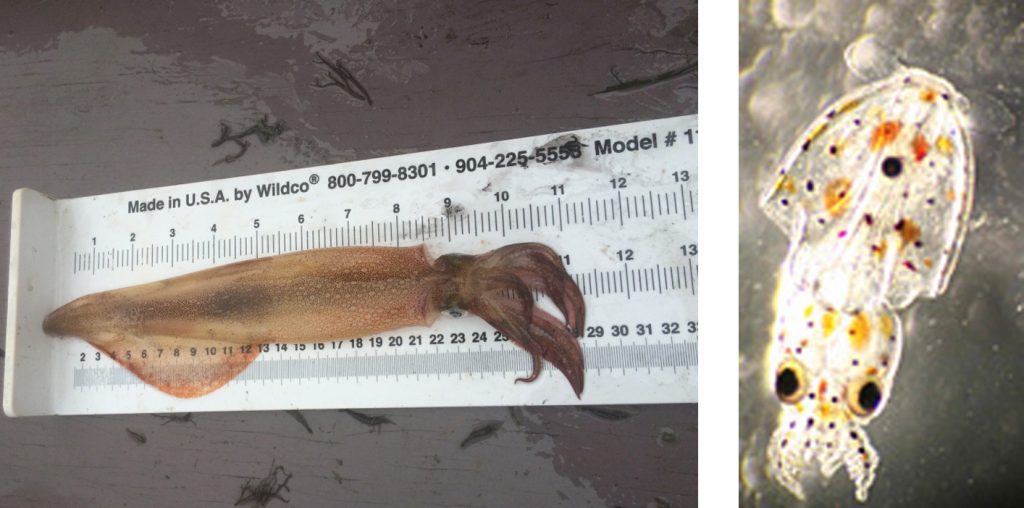Embryonic Development and Paralarval Ecology of Squid
Nichols is working with commercial fishermen to investigate the time of hatching and the association with environmental factors such as water temperature. Once the timing of hatching and associated conditions are determined, these data can be used to inform fishermen and managers and aid them in their decision-making process with respect to the manner in which fishing gear is deployed in spawning habitat.
When squid eggs hatch, the hatchlings, or paralarvae, become part of the plankton; learning how they behave will help us learn where they go post-hatching and to develop a broader understanding of the importance of inshore spawning grounds to the species.
This work has been funded by the Sounds Conservancy/Quebec-Labrador Foundation, the American Museum of Natural History, and the Nancy Spofford Yerkes Foundation.



